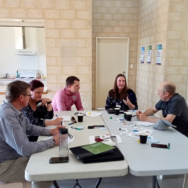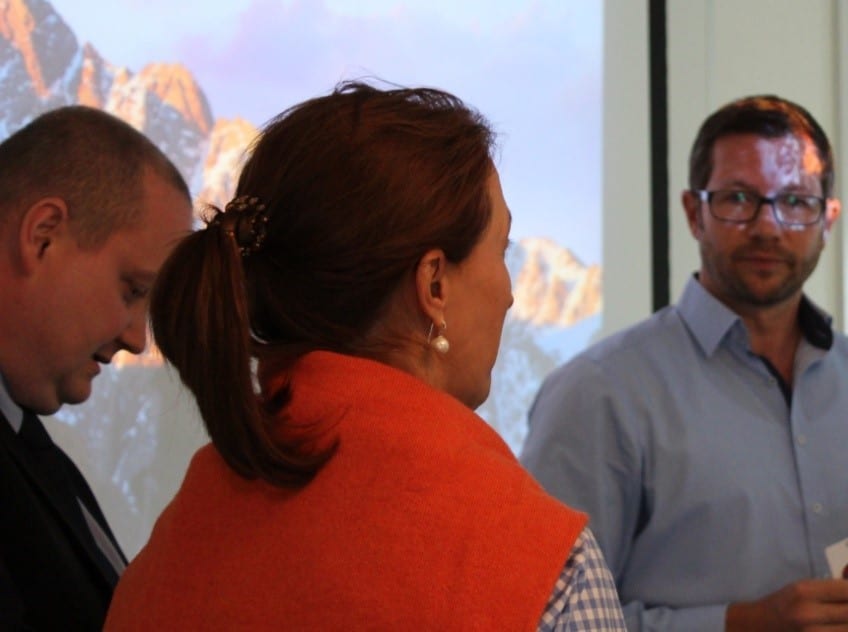Diversity is currently of high interest for leaders at all levels and Human Resource professionals improving their human capital management. But when we say we have new diversity targets, what are we actually talking about? And why?
Cognitive diversity as your competitive differentiator
Most people think of diversity being an inclusion of race, gender, sexuality and cultural differences. While these are all elements of diversity, they essentially lead to one competitive differentiator, and that is cognitive diversity.
"Cognitive diversity is the differences of ideas within your team that results from having people from different backgrounds, personalities and preferences."
Our personality is the combination of biological and cultural experiences, which is why people from different backgrounds can offer creativity in problem-solving and innovation.
So, what are some of the benefits for leaders in embracing cognitive diversity within their teams?
Most teams will already have some form of diverse thinking in their teams. Being mindful of that mix and creating an inclusive culture that embraces ideas is essential for staff retention, innovating and remaining competitive. For example, sales leaders report that customer service complaints are resolved more efficiently in cognitively diverse teams by providing more creative approaches to resolving problems. Equally, project managers benefit from having a wider range of technical and creative inputs from their team when generating ideas for improving processes, overcoming obstacles and meeting deliverables with minimal costs and maximum yield.
Through the years, we have talked to different types of leaders in our Leadership Workshops. We share the benefits leaders experience through embracing cognitive diversity as well as a strategy to do so in this article.
Don't know how to lead change?
Don't have the right tools to start?
Let our industry experts and trainers train and upskill your people.
Harnessing cognitive diversity as a leader
For leaders in general, cognitive diversity can be used to address the increasing pressure to innovate, retain staff and remain competitive in constantly changing global markets. This sounds simple enough, but what does that actually mean for you as a leader? What do you actually need to do to get these benefits?
This means that your intention needs to be more than a memo. It needs to be communicated to middle managers and your team so that everyone understands the aim and implements it sustainably. Naturally, people with diverse thinking can create discomfort within the organisation as the status quo is challenged and ways of doing things are driven to change. So, you will need a strategy in place to empower leadership to manage the disruption and ultimately reap the benefits of working with a diverse range of thinkers.
"The first step in creating a cognitively diverse team is positioning your attitude towards it so that these values start to take hold in your environment and your organisation."
Let’s look at two more specific management scenarios and what cognitive diversity means in that context: Sales managers and project managers and their teams. Sales, as well as projects, are fast-paced, competitive and highly measured work environments. Being competitive, innovative and excellent in problem-solving are vital for these teams and their managers.
Cognitive diversity in the context of sales
Sales leaders live to motivate their team in order to achieve stretch targets, meet Key Performance Indicators (KPI’s) and maintain highest customer satisfaction. Sales teams struggle with high turn-overs, rivalry and silo-ed thinking. Leaders report that as the team is tuned into the different personalities within and outside their organisation they become better observers and listeners; Customer relationship improves; The team is able to increase cross-sales, resolve complaints more innovatively, handle objections more attentively, and increase the overall performance. Training your staff and your leaders in understanding, managing and embracing cognitive diversity is, therefore, a tangible competitive advantage for sales leaders.
Cognitive diversity in the project environment
Project managers often deal with transient teams. They need to quickly understand the personalities, strengths and limitations in order to drive deliverables, achieve milestones, overcome barriers and ensure project success. Project teams often deal with time and resource challenges as well as moving targets. Project managers tell us that understanding the personality landscape surrounding them improves communication, messaging and problem-solving.
"So, what is a recommended strategy for embracing cognitive diversity?"
After learning to embrace cognitive diversity project managers report an increase in shared ideas, technical and creative input and remove roadblocks. One project manager even came up to me saying that the workshop ended up being the best team building he could have hoped for. Having a strategy for cognitive diversity in a project environment helps managers to boost morale and retain specialists. There is a high competition for top talent and staff who feel valued and part of a team, are more likely to stay with your organisation.
Not ready to work with us yet?
Receive monthly insights and information to your inbox for free to help you improve your change leadership skills.

“Their monthly insights are always thought-provoking and interesting.”
Sabine Powell, GM Technical Services
MMA Offshore
So, what is a recommended strategy for embracing cognitive diversity?
#1 Know where you stand
Having a record of what you’ve been doing is a great way to see how well things are going. Keeping metrics on your diversity initiatives will allow you to measure what you’ve been doing well, what’s working and what needs some improvement. Getting a team profile will allow you to document a baseline of the personalities within your team and highlight strengths, weaknesses, opportunities and threats (SWOT).
#2 Know where you want to go
Making sure your managers and staff understand the importance of cognitive diversity will allow for a sustainable implementation of your strategy. One good way to do this is for managers to set meaningful KPI’s regarding diversity and providing rewards for solutions that embrace diverse inputs. Defining the personality mix needed to do the job well provides managers with a visual spider graph of minimum and maximum characteristics in which they need their team to sit. A job profile draws a neat spider graph where gaps become obvious as well as unused talent.
#3 Lead by example
It is important that you lead by example and demonstrate an appreciation for the diversity of ideas and inputs in meetings and day-to-day conversations. Challenge yourself with making structured or unstructured brainstorming a routine.
#4 Foster open minds
Consciously manage your own biases. Understanding your own cognitive bias is an important step in avoiding any unintentional behaviour that contradicts your aims. If you are not sure about what filters you have on we recommend you look a bit closer. One of the best ways to understand your own personal preferences and underlying bias is to study your own profile and where it sits in relation to your team members. Individual plus team reports to provide a visual guideline as to where synergies and conflicts are hidden within your work relationships. Being conscious of that can work well as an early warning system for future roadblocks and difficulties.
#5 Learn from others
Let’s face it leaders are often thrown into the deep end and expected to know everything. However, we all know you cannot be an expert in everything and everyone learns more as we go along. In order to become good at embracing cognitive diversity choose an approach that allows for educational learning, exposure learning and experiential learning.
"In a nutshell: Study best practices, learn from others and use a try-fail-improve-try again strategy."

Eva is one of the masterminds behind Approach Services' blog and The 6 Cents of Change. She is an innovator, trainer and change manager. Her work has been published in the Schmalenbach Journal of Business Research. In her spare time, she enjoys camping with her two little boys and permaculture gardening.
Subscribe to our monthly newsletter The 6 Cents of Change and follow us on LinkedIn to learn more!












